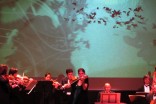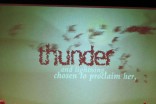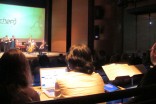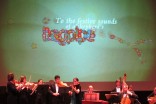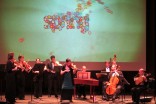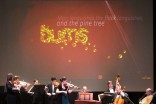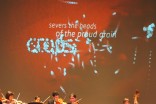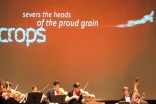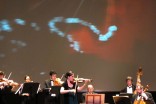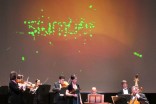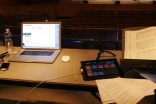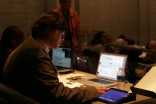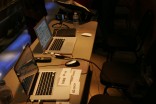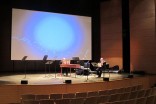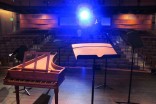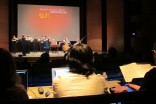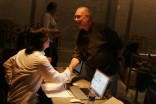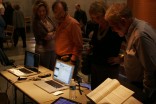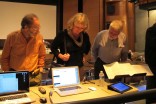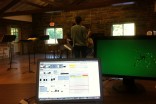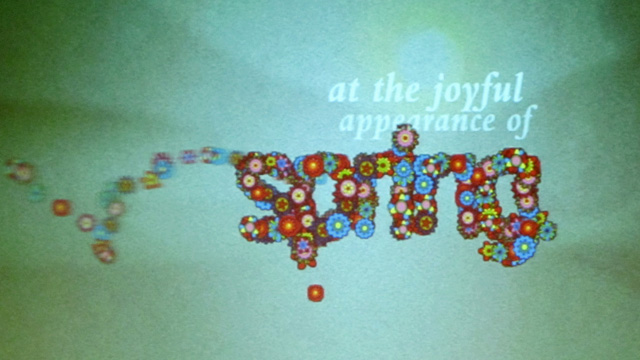 |
|---|
Multimedia Vivaldi4Seasons, 2011, Cultural Arts Center at Silver Spring, Maryland It’s not often that visual artists get a chance to work with and be supported by a talented group of classical musicians. When Dan Abraham first approached us and shared his ideas, we immediately recognized it as a unique and exciting opportunity. The main concept was to create moving imagery and text that would communicate the English translation of the Sonnets, and appear at exact times noted on the original score. We knew right away that our goal was to provide a holistic experience between the visuals, typography and sound. We didn’t want to create a “music video”; neither did we want our work to become a mere backdrop to the musicians on the stage. Rather, we aimed to become the Visual Performers ourselves, and asked Dan Abraham to become our conductor for this event. We decided to create a visual instrument that could allow us to orchestrate and animate the foreground images (“notes”), background images (“sets”) and the texts (“phrases”) in real time. The “notes’” automatically reacts directlyto the live sound, while the “sets” and “phrases” are manually triggered. This approach required extensive technical research and aesthetic flexibility. We have explored various technology options, each with its capabilities and limitations. They ranged from manipulating pre-recorded video clips to using MIDI tracks for procedural animation. What you see today is a two-part system. The first (made with MaxMSP) captures the live sound and allows us to set its pitch and amplitude to different properties (position, speed, scale, color). The other (made with Processing) lets us map those properties to any image or text we are showing. The imagery, which began as a traditional storyboard, evolved into a more flexible system of modular designs. Each visual element is created to be in harmony with all the rest and provide depth, while still allowing for the color, scale and position adjustments during the performance. The small pictures used to compose text required special treatment in order to be legible, yet expressive. The images follow the narrative of the sonnets, but do not reflect the text literally. Instead they set the mood and provide a playground for the imagination. This work will never appear exactly the same twice; much like the music itself would never be performed identically. Anything could happen tonight, and we invite you to join us for this adventure. |
video link for users in China |
video link for users in China |
Multimedia Vivaldi4Seasons - Summer I & Winter III, 2011 Reactive typographical particle system with live performance. Made from a system composed of Processing, Max/msp, Touch OSC, iPad. |
credit: |
video link for users in China |
Multimedia Vivaldi4Seasons, system test |
video link for users in China |
Multimedia Vivaldi4Seasons, midi parsing test Midi data parsing using Max/Msp. The pitch and rhythm are then perfectly visualized in After effects using particular particle system. |
| snapshots |
Multimedia Vivaldi4Seasons |
